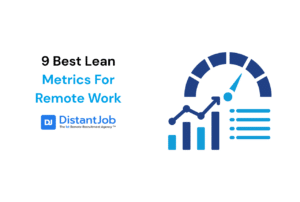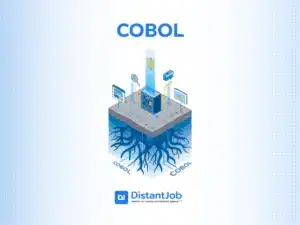Choosing between custom software development and off-the-shelf software for one of your companies can’t be an easy choice.
Both bespoke and off-the-shelf software development require a significant time and financial commitment, and both have long-term consequences for your business.
According to the Custom Software Development Global Market Report 2025, bespoke software development’s market size is forecast to grow to $120.22 billion in 2029 at a compound annual growth rate (CAGR) of 22.0% in the next few years.
In this article, we will dig deeper into the pros and cons of custom software development. But first, let’s clarify what it is and what adopting it means for you.
What is Custom Software Development for Businesses?
Custom software development is the process of creating new software for a particular team or company. Custom software can either be built from scratch or modified from commercial off-the-shelf (COTS). This process is pretty much like your average SDLC (design, development, deployment, and maintenance). The difference is that the custom software is tailored for the team or company’s needs
For example, AWS, or Amazon Web Services, originated from Amazon’s internal need to manage its vast infrastructure. They built their private cloud for the company’s needs. Recognizing the potential of this technology, Amazon launched AWS as a commercial cloud computing platform in 2006.
Another good example of Custom Software Development is a DevOps good practice called Platform Engineering. This practice includes creating a platform for your IT team with all the software they need, instead of making them choose between hundreds of options.
Pros of Custom Software Development for Businesses
Custom software is tailor-made to fit IT teams like a glove, aligning perfectly with the business’s objectives. This approach is a “game-changer” for businesses as it provides solutions that generic software cannot meet.
Here are some of the essential advantages of using Custom Software.
#1 Improved Productivity
If you buy off-the-shelf solutions, they might not be designed with your company’s processes in mind.
Custom software development for your business guarantees that the solution fits your particular requirements. Tailored solutions streamline operations, automating repetitive tasks and reducing manual work. That would mean significant time savings for employees, allowing them to focus on tasks with greater impact and better results.
Your processes will improve through the development of bespoke software, resulting in increased productivity for your company.
You’ll be more productive as a result, which will pay you financially in the long term.
#2 Cost Efficiency in the Long Run
Custom software development pays for itself over time with better returns. Custom software requires a significant initial financial commitment, but these expenses quickly dissipate. According to a study from Forrester, “businesses can achieve an ROI ranging from 200% to 600% when they invest in custom software development”.
Compare it with licensing fees and other additional concerns associated with off-the-shelf software purchases. These can include recurring expenses(if it is a subscription-based solution), security and privacy concerns (in the case of cloud solutions), or compatibility with your current systems associated with off-the-shelf software purchases.
#3 Enhanced Security
Custom software has the advantage of including the security features needed by your company right in the code. Your custom software development team decides how your application handles data.
Businesses can reduce security concerns and lower the risk of breaches by incorporating customized security protocols, ensuring that sensitive information remains safe and private.
In general, hackers prefer COTS (commonly available commercial off-the-shelf software) and will look for vulnerabilities in these tools to get access to your system.
Using your own software, infiltration possibilities are decreased. However, security must be a core consideration throughout the development lifecycle, not an afterthought, to mitigate risks and ensure compliance.
#4 Scalability and Flexibility
Custom software development can grow and adapt alongside a business, offering a significant advantage over generic, off-the-shelf solutions. As a result, you can be confident that the software will adapt to your company’s evolving requirements.
On the other hand, the characteristics of a ready-made application are more or less fixed and cannot be readily customized. You’ll have to wait for another business to improve its features before using off-the-shelf software. With bespoke software, this is not the case. You have a team at your disposal that can accommodate all of your demands and add new features as needed.
Outsourcing development to another business necessitates ensuring that maintenance is included in your contracts and that your contracts are adaptable enough to accommodate any future modifications. On the other hand, if you decide to build and maintain your own internal IT team, this problem goes away.
#5 Compatibility and Integration
Your company may be using several different tools. You may want all tools to connect efficiently, needing custom interfaces that facilitate data transmission across applications.
These features are very tough to come across using a commercially available tool. Custom software, on the other hand, may include this compatibility. Off-the-shelf software may offer some integration possibilities with other programs, but this integration may not be as smooth as you want.
Custom software can also be designed to integrate smoothly with your company’s existing software, tools, and legacy systems. Meanwhile, off-the-shelf software often presents compatibility issues.
#6 Ongoing Support and Maintenance
Custom software development teams offer more comprehensive support than those working on off-the-shelf products.
In most cases, your contracts with outsourcing partners include ongoing support. It means you’ll have a dedicated staff to look after your software’s needs. The same is true if you build your own internal IT team.
Off-the-shelf software support can’t compete with this for issue resolution and defect repair.
Custom software development solutions offer quicker response and resolution times, which can be guaranteed through the inclusion of service-level agreements (SLAs) in your contracts.
You are in charge of the assistance you get, not the other way around.
#7 Being Competitive in the Market
Custom software is developed specifically for your company’s requirements. You may obtain a system with a variety of unique features that your competitors do not have. When you have a one-of-a-kind solution, you have a competitive edge over your rivals.
This solution may become your USP (unique selling proposition): Offering personalized interactions, streamlined processes, or unique service delivery mechanisms (e.g., a personalized recommendation engine and streamlined checkout process for an e-commerce business). In that way, custom software can significantly boost customer satisfaction and retention.
Off-the-shelf software is inflexible. Therefore, your business processes must be adjusted to fit around it.
It’s easier to concentrate on your target audience when you have your own bespoke software. As a result, your customers will be happier, and you’ll have more business in the long term.
Costs of Custom Software Development
Effective budgeting and planning demand knowledge of the key factors that influence the cost of custom software development. These factors vary significantly from project to project, company to company. It makes a universal answer impossible.
However, it’s doable to measure them and define your company’s costs. With these factors, you will determine the overall cost of custom software development. Remember that a personalized quote tailored to your specific project is indispensable for a precise understanding of costs.
Here are the key cost-influencing factors:
1. Project Scope and Complexity
Simple features (basic data management, login, etc.) are cheaper, but complex functionalities like advanced algorithms, AI-driven features, real-time data processing, custom dashboards, or machine learning models demand specialized knowledge and more development time, significantly increasing costs.
As the number of unique screens or pages increases, so does the work required and, consequently, the cost. Small apps might have 10-25 screens, while large applications can have 40+.
Designing software also requires foreseeing for future scalability (to handle increased load or users). This is a long-term investment that can increase initial project costs.
Finally, the type of software itself dictates complexity. The following numbers come from Binmile: A simple web app with basic CRUD features will cost significantly less ($30,000-$100,000) than a mid-sized SaaS platform with payment integration and user roles ($150,000-$500,000), or an enterprise ERP system with multi-module, workflow automation, and AI features ($500,000 and above, potentially exceeding $1,000,000).
Project Scope Key Factors
- Simple features: login, authentication, basic data management, etc.
- Complex features: AI, custom dashboard, sophisticated machine learning
- Scalability: Number of users
- Software Type: CRUD, SaaS Platform, Enterprise ERP, AI features
2. Design Requirements (UI/UX Design)
Basic designs using standardized templates are less costly. However, a unique, tailored interface involving extensive user research, prototyping, high-quality visual design, animations, or AR/VR elements will increase costs due to the time and effort required by skilled designers.
Design requirements might be around 15-25% of the total cost, potentially $15,000-$30,000 or more for a highly interactive e-commerce UI/UX.
Design Requirements Key Factors
- Simple and basic design
- Interactive and intuitive design
3. Technology Stack
Technology impacts cost. Widely used technologies like JavaScript, Python, or PHP are generally cheaper due to a larger pool of developers. On the other hand, specialized or emerging technologies (e.g., Rust, Scala, AI, Blockchain, IoT, Microservices, Kubernetes) can drive up costs because experienced professionals are harder to find. If you’re considering specialized expertise, we can find you dedicated Scala developers who ensure both quality and scalability, even within tighter tech budgets.
Integration with other services is also a factor. Depending on your need for connection with third-party services (like payment gateways, CRM tools, cloud storage, or legacy systems), your costs might rise. The effort required for mapping, synchronization, and testing makes your custom software more expensive.
Each API integration can take hundreds of engineering hours yearly for maintenance and troubleshooting, potentially adding around $50,000 per integration.
Technology Stack Key Factors
- Programming Languages and Frameworks
- Integration with Other Systems
4. Development Team
A larger team can accelerate development at a higher cost. Experienced developers (senior or specialized roles, like tech leads, software engineers, or solution architects) ask for higher rates than junior developers. The highest cost of a software solution is often on the wages of the development team.
Development rates vary significantly by region. Developers in high-cost regions like North America ($100-$250+ per hour) or Western Europe ($70-$150 per hour) typically charge more than those in cost-effective regions like Eastern Europe ($30-$70 per hour) or Asia (India, China: $20-$40 per hour).
Outsourcing to regions with lower rates can significantly reduce expenses; however, developers’ quality might be questionable. Your best bet would be getting vetted developers from passive candidates.
Whether you hire an in-house team (costly but with more control), outsource to an agency (expertise at higher per-hour costs), or use freelancers (cost-effective but riskier for large projects) impacts both the budget and time spent. In-house teams can incur over $100K per year per developer in salaries, benefits, and infrastructure.
Just a friendly reminder that DistantJob can get you an in-house team with cost-efficiency, fitting your budget, hard and soft skills, and cultural fit.
Development Team Key Factors
- Team Size and Expertise
- Team Location
- Type of Team
5. Development Process
The chosen software development methodology (e.g., Waterfall, Scrum, DevOps) can influence costs. Scrum, while potentially leading to more iterations (and time), results in a better final product by allowing flexibility for changing requirements.
Effective project management adds to the cost (since it requires the best project managers), but it ensures smoother execution, reducing risks of delays, confusion, and financial loss.
Development Process Key Factor
- Project Management Framework
6. Testing and Quality Assurance (QA)
Comprehensive testing (unit, integration, system, user acceptance, performance, security) requires increased costs compared to basic functional testing. Projects can allocate 15-20% (small projects) to 30-35% (complex projects) of their budget to testing.
Automated testing can reduce long-term costs and improve reliability by catching issues earlier and consistently. Have in mind that automated testing has higher initial setup costs. However, it will pay off in the long run.
Tests also require engaging QA professionals to conduct meticulous checks, ensuring adherence to standards and specifications, and contributing to cost variability.
Testing and Quality Assurance Factors
- Extent of Testing
- Automated Testing
- Quality Assurance Professionals
7. Maintenance and Support
No software is truly complete. It requires maintenance, bug fixes, updates, new feature development, performance monitoring, and ongoing support. Maintenance and support for custom software development consume approximately 67% of the total software development lifecycle cost, and it’s recommended to set aside 15-20% of the initial development budget annually for these costs.
Additionally, Cloud or SaaS platform hosting incurs monthly fees ($50-$1000 for cloud, $1000-$10,000+ for SaaS).
Maintenance and Support Key Factors
- Post-Launch Support
- Hosting Costs from Cloud or SaaS
8. Security Requirements
Data protection standards (e.g., GDPR, HIPAA) and robust security features (encrypted storage, multi-factor authentication, intrusion detection) are key for your custom software development. Not as an afterthought, but from day 1.
Proper security adds significant cost due to detailed audits, additional documentation, and specialized expertise. Industries like healthcare and finance have strict compliance requirements, which can drive costs significantly higher, potentially $500,000+ for compliance-heavy projects.
Security Requirements Key Factors
- Data Protection
- Compliance
9. Time Frame
The tighter that deadline gets, the more expensive the costs will be, unless you prefer to sacrifice quality. It’s the Iron Triangle, after all. If your project demands extended working hours, a larger team, or parallel development streams, your developers will demand compensation accordingly. Rushing a project often means paying a premium.
Time Frame Key Factor
- Development Speed
10. Licensing and Tools
About licensing software, you must consider open-source, free software, and commercial licenses.
Open-source software is free but might require more customization; it’s all about the source code being open and exchangeable. Free software differs from open-source software; it respects your freedom to do whatever you wish with it and how you use it. Commercial licenses offer advanced features and support but involve upfront and recurring costs.
About tools, you must check the complexity. Basic tools are cheaper, while advanced tools (paid IDEs, sophisticated CI/CD pipelines, code analysis tools) improve productivity but add to initial setup and ongoing costs.
Licensing and Tools Key Factors
- Software Licenses
- Development Tools
11. Industry-Specific Requirements
Here is the wild card of the costs. What application will emerge from your custom software development?
For instance, healthcare software. It requires heavy investment in both security and compliance (e.g., HIPAA, patient data security, EHR integration). Simple healthcare apps start at $75,000, while complex systems can reach $250,000 or typically range between $70,000 and $500,000.
When it comes to FinTech, it must meet advanced security needs and complex integrations. Simple solutions start at $40,000, while sophisticated platforms can cost up to $300,000.
Finally, e-commerce platforms follow a tiered pricing structure, with simple platforms having lower ongoing costs ($39/month plus fees for domain, SSL, payment gateway, custom development $2,000-$20,000+) and large-scale custom solutions costing over $150,000 for advanced features.
Industry-Specific Key Factors
- Depends on the industry
Conclusion
In the end, it’s all about what you need for your company. Using a tailored piece of software ensures rapid expansion, increased output, and a superior end-user experience.
On the other hand, a custom solution might be more suitable for your clients who have evolving business requirements and who they also need to ensure compatibility with existing systems.
For example, with DistantJob, you can hire talented developers who help you craft a custom solution and who will also adapt to your business culture and processes in no time. Contact us to learn more!





